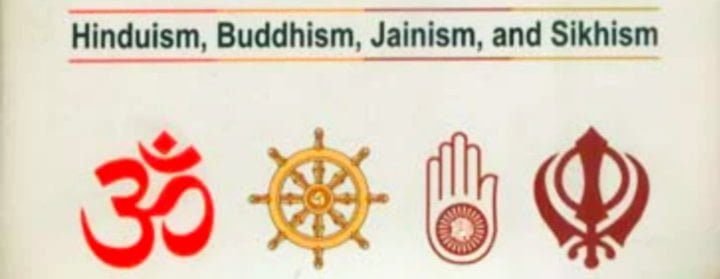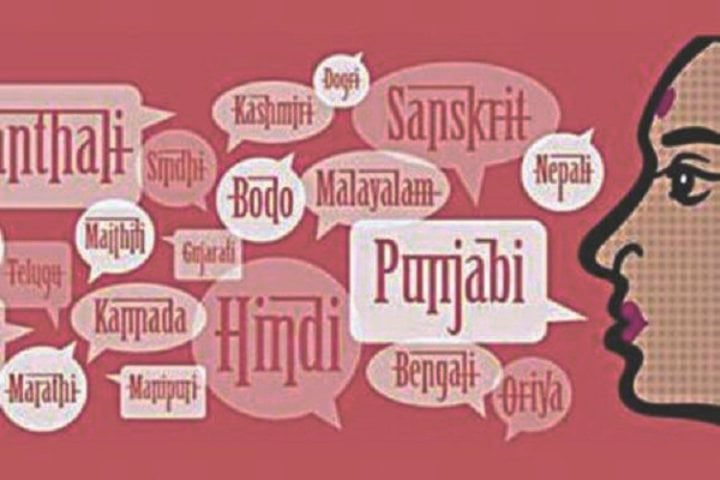Indian Civilization and Culture
India is a land of diversity, known for its vibrant culture and ancient civilization. The cultural heritage of India has made it home to some of the most ancient civilizations, making it a country with a rich past and a dynamic present.
In This Article
Indian civilization has witnessed the magnificence of the Indus Valley civilization, the Mauryan Empire, the Gupta Empire, and the glory of the Mughal Emperors. They are just a few of India’s many dynasties that have left an indelible mark on the country’s history and culture.
The diverse Indian culture is an amalgamation of various regional customs, rituals, and traditions that have been passed down from generations to the present.
Every corner of India is unique and vibrant, from the Himalayas’ beauty in the north to the serenity of southern beaches. And with every passing year, India’s civilization and culture continue to evolve while keeping their essence.
The History of Indian Civilization
The earliest civilization in India dates back to the Indus Valley Civilization, also known as the Harappan Civilization, one of the earliest and most significant urban civilizations in the world, dating from about 2600 BCE to 1900 BCE.
The Aryan Invasion had a significant impact on Indian society, leading to the emergence of the caste system and shaping the religious beliefs of India.


It spanned parts of what are now Pakistan, Afghanistan, and the northwest regions of India. The cities of this civilization were well-planned, and the evidence indicates a very high level of social order based on religion and trade activity.
One of the most significant periods in Indian history is the Mauryan Empire, which dates back to around 322 BC. The Mauryan Empire was the largest empire in India’s history, covering most of the Indian subcontinent.
One of its most exceptional leaders was Ashoka, the third emperor of the Mauryan dynasty. Ashoka is famous for his military conquests, conversion to Buddhism, and efforts to spread peace and tolerance throughout his empire. His edicts have been found all over India and have acted as a beacon of moral values.


The Gupta Empire flourished between the fourth and sixth centuries AD and was an era of significant intellectual and artistic achievements.
The Gupta Empire saw an explosion in literature, art, math, and astronomy. Kalidasa, one of the greatest poets of Sanskrit literature, produced his masterpieces during this time.
India saw Islamic art, architecture, and culture flower during the medieval period. Emperors like Babur, Akbar, and Aurangzeb oversaw the Delhi Sultanate, which left behind a rich architectural legacy that continues to amaze people today.
The Mughal Empire’s most remarkable accomplishment was building the Taj Mahal, the world-famous monument to love and one of the Seven Wonders of the World.
India was also under British rule for over 200 years, which significantly shaped the country’s political and cultural landscape.
The Beliefs and Religious Traditions of India
India is known for its religious diversity, but among the most significant religions in India are Hinduism, Buddhism, Jainism, and Sikhism.


Hinduism
Hinduism is one of the oldest religions in the world, originating in India. Jainism and Sikhism were born out of Hinduism and included in their ideas a rejection of the Vedas, the primary scriptures of the Hindu faith.
Hinduism’s three principal deities, called the Trimurti, are Brahma, Shiva, and Vishnu. They represent the universal concepts of creation, destruction, and preservation, respectively.
Hindus believe in dharma, a universal law that defines the proper conduct in life, and karma, the power of actions to determine the form of one’s future rebirth.
The ultimate goal in life is to break the endless cycle of incarnations (saṃsāra) and achieve mokṣa, union with the Divine.
Jainism
Vardhamana Jnatiputra, also known as Nataputta Mahavira (599–527 BC), founded Jainism. He was also known as Jina (the Spiritual Conqueror).
Contrary to the Hindu belief that a god (or goddess) is the universe’s creator, the Jains believe that the universe is an eternal phenomenon, never created and never to be destroyed. It is a self-sustained, self-managed phenomenon that runs on the principle of cause and effect (karma and reincarnation).
In terms of their philosophy, Jainism, Buddhism, and Hinduism also differ from each other. Hinduism is a polytheistic religion with multiple gods and goddesses, each of whom has a specific role in the universe.
In contrast, Jainism believes in eternal blissful souls that exist independently of God. Similarly, Buddhism believes that there is no permanent soul and that everything in the world is constantly changing and impermanent.
To avoid bad karma, Jains must practice ahimsa, a strict code of nonviolence. Jains believe plants, animals, and even some nonliving things (like air and water) have souls, just as humans do. The principle of nonviolence includes not harming humans, plants, animals, or nature.
Buddhism
Buddhism originated around the same time as Jainism and emphasizes personal spiritual development and meditation. It is non-theistic, meaning it does not revolve around a belief in a god or gods. Instead, Buddhists believe in impermanence—the idea that everything is subject to change, including human beings.
Despite these differences, there are also similarities between these religions. For example, all of them emphasized the importance of self-realization and the attainment of a state of enlightenment or liberation.
In Jainism, this state is called moksha; in Hinduism, it is known as mukti or moksha. In Buddhism, attaining this state is called Nirvana, which means ultimate peace and liberation.
Sikhism
Guru Nanak founded Sikhism in the late 15th century CE, based on universal love. Sikhism has ten gurus who created the texts and beliefs of the religion. Their beliefs are codified in the writings of the Guru Granth Sahib.
The concepts of karma, dharma, reincarnation, and the pursuit of liberation have shaped the religious outlook of India.
The colorful festivals of India celebrating the gods and goddesses of these religions, such as Diwali, Holi, Dussehra, and Navratri, are all deeply rooted in India’s beliefs and religious traditions.
The Customs and Traditions of India


India’s customs and traditions are known for their harmony, vibrancy, and distinctiveness. From weddings to colorful festivals to intricate arts and crafts, Indian customs and traditions are colorful and unique. Indian weddings, for example, are known for their grandeur and the rituals accompanying them.
Festivals in India bring people of all ages, religions, and backgrounds together, symbolizing unity in diversity. Some major festivals celebrated in India are Diwali, Holi, Eid, Christmas, Durga Puja, and Ganesh Chaturthi.
Each festival is unique in its own way, and it’s fascinating to see how they are celebrated differently in different parts of the country.
For example, Diwali is the festival of lights, celebrated with great fervor across the country. People light up their homes with earthen lamps, exchange gifts and sweets, and enjoy the festive atmosphere.
Similarly, Holi is the festival of colors, where people play with colors and water and prepare special delicacies.
The dressing style of every region in India and its traditional handicrafts also reflect Indian cultural diversity. From the colorful sarees to the intricately embroidered suits, there are endless varieties of Indian clothes worn by men and women.
Indian cuisine is renowned for its rich flavor and complexity. Each region of India has its own unique cuisine.
India is home to many beautiful arts and crafts unique to this country. From intricate embroidery to colorful pottery and handwoven textiles, there is no end to the diversity of Indian art.
Some popular art forms in India include Madhubani painting, Kalamkari, Pattachitra, Warli art, and Phad painting. Similarly, Indian crafts like pottery, textiles, and jewelry are famous for their intricate designs and unique beauty.
India’s Contribution to the World
India has contributed significantly to the world in various fields, such as mathematics, astronomy, medicine, and language.
Science and Mathematics
One of the most significant contributions by Indians to the world is the concept of zero, which revolutionized mathematics. Indians used a form of zero as early as 500 AD, allowing mathematical calculations without using Roman numerals.
This invention made computation feasible and paved the way for the development of algebra and calculus, indispensable components of modern-day science and technology.
Worldwide, academics have praised the achievements of Indian mathematicians like Aryabhata, Ramanujam, C. V. Raman, and others.
Literature
Indian literature spans a vast period, from ancient epics such as the Ramayana and the Mahabharata to contemporary award-winning novels.
The country has produced numerous great authors and poets, such as Tagore, Rumi, Amartya Sen, and many more, whose works have inspired and enriched the world’s literary panorama.


Yoga and Ayurveda
India has been a pioneer in the field of Ayurveda, an ancient form of medicine that rests on the principles of holistic healing. Ayurveda focuses on maintaining body-mind-spirit balance and harmony, crucial for good health and well-being.
This discipline has influenced alternative medicine systems worldwide and has been acknowledged for its therapeutic properties. From yoga to meditation, India has been a leading light in promoting wellness and healthy living.
Conclusion
India is a country that the world has long admired for its beauty, diversity, and culture. Its ancient civilization and traditions continue to thrive, making it one of the most admired countries in the world.
India’s unique customs, festivals, and beliefs have shaped its identity, and its contribution to the world’s knowledge has placed it at the forefront of progress and development.
India’s contributions to the world are numerous, and its impact on diverse fields has been profound and far-reaching.
From spirituality to technology, the country’s legacy has influenced humanity in many ways. Its contributions are restricted to the past and continue to shape the present and future.




